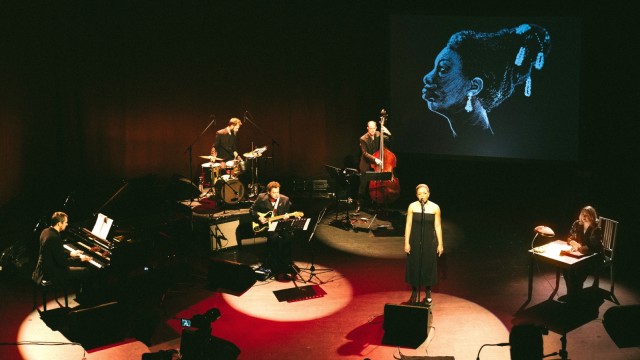Being close to Nina Simone when the opportunity arose was a sacred duty for her disciples: a high mass with the “High Priestess of the Soul”. Whether it was a pleasure depended on her form on the day and the circumstances. When the daughter of an American Methodist preacher and a hairdresser and entertainer was supposed to appear for an audience in Munich in 1991, the circumstances were not ideal for the sensitive ears and mind of the then 58-year-old jazz diva. She was supposed to perform in the tent of the Tollwood hippie festival, and so the SZ critic was also worried about whether the “lady, who is a bit complicated when dealing with managers, organizers and the audience,” would really come, really go on stage “and maybe even really I have a desire to make music.
You have to understand this lifelong tension. For example, Nina Simone, then Eunice Kathleen Waymon from North Carolina, wanted to become the first black classical concert pianist in the USA. Even as a child she played by ear, she studied – an absolute rarity for African-American women – at the Juliard School in New York, admired the European virtuosos Chopin, Liszt, Rachmaninov and used Bach’s counterpoint – well, you can do that expect an “attentive audience”. But when she had to appear as an entertainer for a living in a pub, club or casino and the guests were chattering, she would angrily attack them.
Not only loving Nina Simone, but also learning to understand her – that’s what a homage in Munich’s Amerikahaus is all about. “Even without knowing who Nina Simone was, her music and her interpretations are great, a unique pleasure,” says two-time “Echo Klassik” prize winner on double bass Florian Dohrmann. But his concept for the show “The Nina Simone Story” was about more: “Why she sings the way she sings? Why she plays the piano the way she plays? Why she says what she says… all of that becomes clear the more you immerse yourself in her life. Then her art becomes more than music: something deeply touching.”
Nina Simone was called “The High Priestess of Soul”. Here is a photo from 1993.
(Photo: AP-SZ)
Film excerpts, photos and the stories of SWR broadcaster Katharina Eickhoff will trace her life, as many films, books and, not least, Nina Simone’s autobiography “I Put A Spell On You” have done in their own way. It’s about becoming famous at the end of the fifties with jazz and blues interpretations of Gershwin’s “I Loves You, Porgy”, for example. Her violent protest songs (“Mississippi Goddam”) and her work in the African American civil rights movement will also be central – she first felt her anger against racism when her parents had to move from the front to the back row at one of her school concerts. And the world star went out of America, which had fallen out with her, to South Africa, where she sought her African roots, to the south of France, where she died in 2003 after a long battle with cancer.

The ensemble around Fola Dada wants to capture the spirit of Nina Simone.
(Photo: Sven Goetz)
It was a contradictory, often unfulfilling life. “Who was Nina Simone actually? Why did her voice sound so angular, warm, stubborn, soft? Why was her look so burdened?” asked Fola Dada, who embodied her idol that evening. The singer, who grew up in a small Swabian town and is a vocal coach for the DSDS casting show, who was awarded the German Jazz Prize 2022, is aware of the different “starting points” of her two careers. But it was through Nina that she understood “how powerful art can be when you burn for something, live for something, fight for it. I felt my womanhood and my blackness…”
Nina Simone’s “Authenticity of Music” was “pure inspiration” for this, and Fola Dada wants to build on that with her ensemble (piano: Ulf Kleiner, drums: Felix Schrack, guitar: Christoph Neuhaus) – beyond an eclectic hit parade of “My Baby Just Cares For Me” to “Ne Me Quitte Pas” and up to Barack Obama’s favorite “Sinnerman”. Then you will be close to Nina Simone – just as this “delicate, cautiously typing lady” with “such concentrated charisma” was at Tollwood BeatlesRandy Newman, Brecht/Weill and Gospel: “Standing ovations, flowers, encores, happy faces.”
The Nina Simone Story with Fola Dada, Saturday, January 27th, 8 p.m., Munich, Amerikahaus, www. Amerikahaus.de

